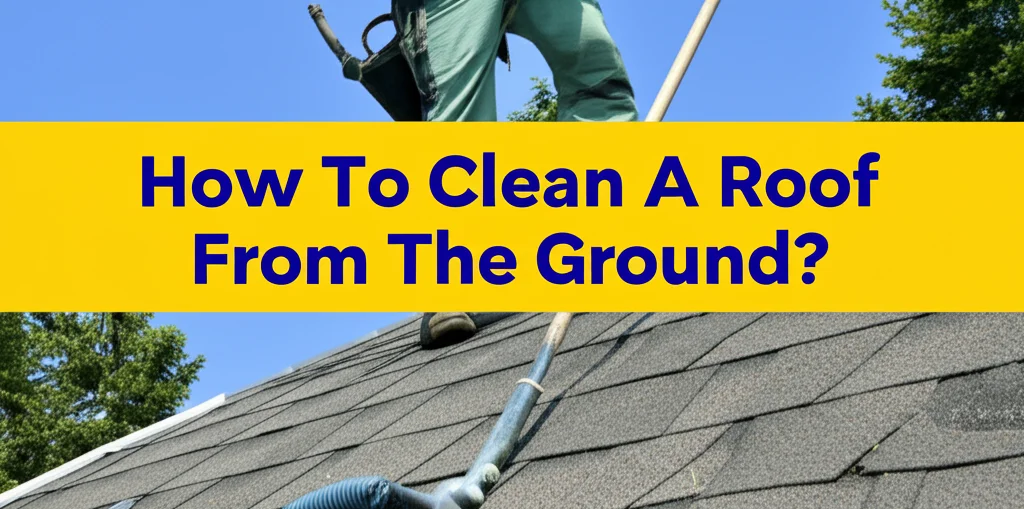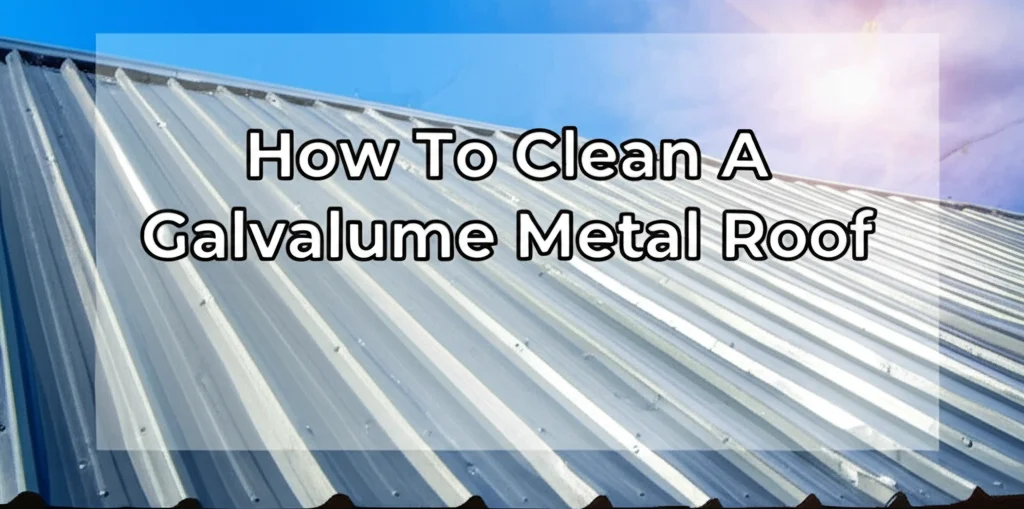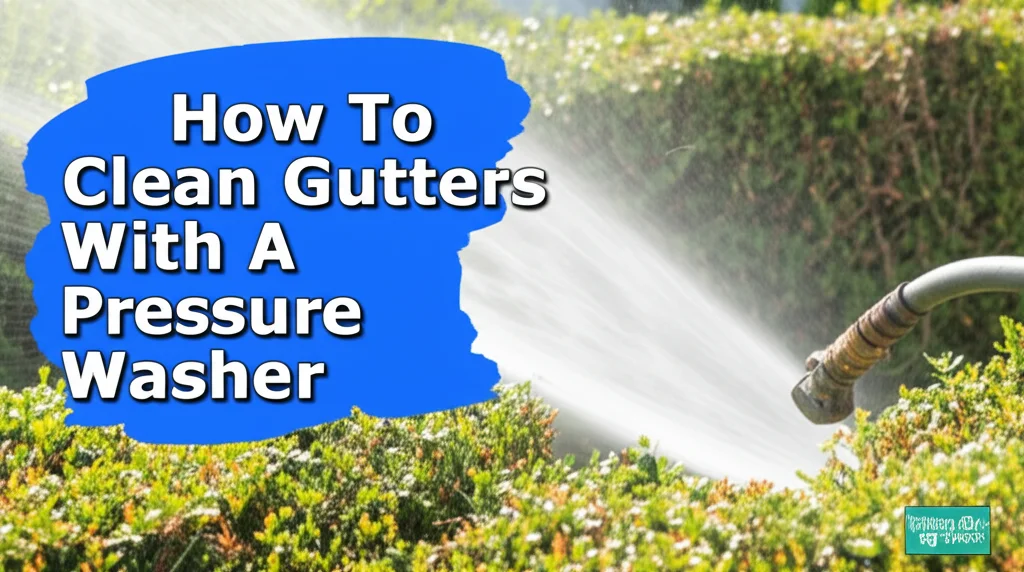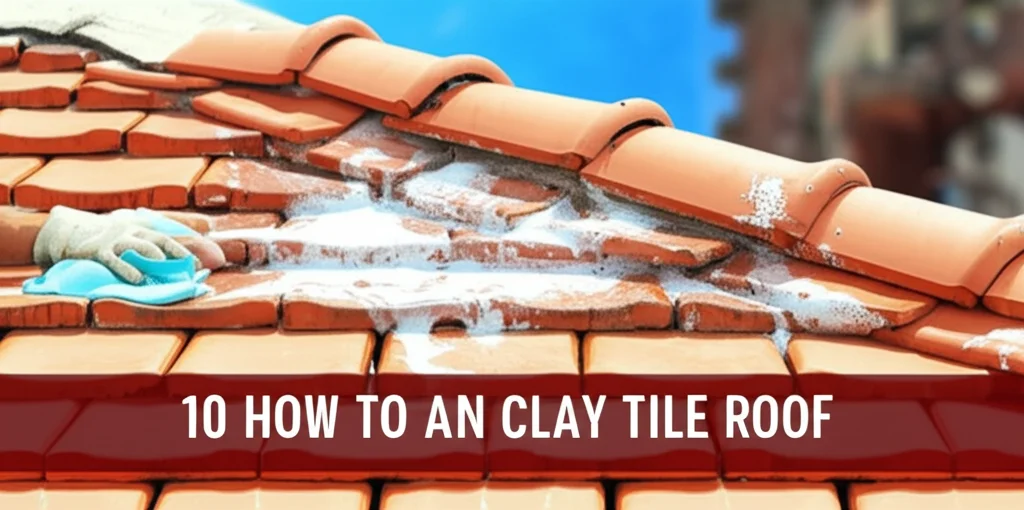· Home Improvement · 8 min read
How To Clean A Roof From The Ground?

Cleaning Your Roof Without Climbing: A Ground-Level Guide
Have you noticed dark streaks or moss growing on your roof? A dirty roof doesn’t just look bad; it can also shorten the lifespan of your shingles. Many homeowners worry about the dangers of climbing a ladder, and rightfully so. Fortunately, you can effectively clean your roof without ever stepping onto it. This article will show you how to clean a roof from the ground, covering the best tools, cleaning solutions, and safety precautions. We’ll walk through everything you need to know to restore your roof’s curb appeal and protect your investment.
Takeaway:
- Prioritize safety by avoiding ladder use.
- Use a garden hose with a nozzle or a specialized roof cleaning attachment.
- Choose the right cleaning solution for your roof type.
- Work from the top down to effectively remove debris.
- Regular cleaning prevents costly repairs.
Can you clean a roof from the ground?
Yes, you can! Using a garden hose with a specialized nozzle, a telescoping pole with a brush attachment, or a low-pressure washing system designed for roofs allows you to safely and effectively clean your roof while remaining firmly on the ground.
Why Clean Your Roof From The Ground?
Cleaning your roof is important for maintaining your home’s value and preventing costly repairs. Traditional methods often involve climbing a ladder, which presents significant safety risks. Falls from ladders are a common cause of home injuries, and even experienced homeowners can be vulnerable. Cleaning from the ground eliminates this risk, making it a much safer option.
Beyond safety, ground-level cleaning is often more convenient. It saves time and effort, especially for larger roofs. You won’t need to spend time setting up and moving ladders, and you can cover more ground quickly. Plus, it’s a great option for those who are uncomfortable with heights or have physical limitations.
Choosing the Right Tools for Ground-Level Roof Cleaning
Selecting the right tools is crucial for a successful and safe roof cleaning experience. Here’s a breakdown of the essential equipment you’ll need:
- Garden Hose with Adjustable Nozzle: A standard garden hose can be surprisingly effective, especially for light cleaning. Choose a nozzle with adjustable spray patterns, allowing you to switch between a gentle mist and a more focused stream.
- Telescoping Pole with Brush Attachment: These poles extend to reach most roof areas from the ground. Look for a brush with soft bristles to avoid damaging your shingles.
- Roof Cleaning Attachment for Pressure Washer: If you have a pressure washer, a specialized roof cleaning attachment is a worthwhile investment. These attachments distribute water at a lower pressure, preventing damage to your roof. Remember to use a low-pressure setting!
- Soft-Bristled Brush: For stubborn stains or moss, a soft-bristled brush attached to a telescoping pole can provide extra scrubbing power.
- Safety Glasses: Protect your eyes from debris and cleaning solutions.
- Gloves: Protect your hands from chemicals and dirt.
Selecting the Best Cleaning Solution for Your Roof
Different roof materials require different cleaning solutions. Using the wrong solution can damage your shingles or void your warranty. Here’s a guide to choosing the right cleaner:
- Asphalt Shingles: A mixture of water and mild detergent (like dish soap) is usually sufficient. You can also use a commercially available roof cleaning solution specifically designed for asphalt shingles. Avoid bleach, as it can damage the shingles.
- Tile Roofs: Tile roofs are more durable and can withstand stronger cleaning solutions. A mixture of water, trisodium phosphate (TSP), and bleach can be effective, but always test a small area first.
- Metal Roofs: Metal roofs are generally easy to clean with a mild detergent and water. Avoid abrasive cleaners that can scratch the surface.
- Wood Shingles/Shakes: These are the most delicate and require the gentlest cleaning approach. A mixture of water and oxygen bleach is often recommended.
Before applying any cleaning solution, test it on an inconspicuous area of your roof to ensure it doesn’t cause discoloration or damage. Always follow the manufacturer’s instructions for dilution and application. If you’re unsure, consult a professional roofing contractor. You can find more information about roof maintenance at https://www.beacleaner.com/how-to-remove-mold-from-painted-walls/.
DIY vs. Commercial Roof Cleaning Solutions
While DIY solutions can be cost-effective, commercial roof cleaning solutions are often formulated for specific roof types and may offer better results. DIY solutions require careful mixing and testing, while commercial products are ready to use. Consider your roof type, the severity of the dirt, and your comfort level when making your decision.
Step-by-Step Guide to Cleaning Your Roof From The Ground
Now that you have the right tools and cleaning solution, let’s get started!
- Prepare the Area: Clear the area around your house of any furniture, plants, or other objects that could be damaged by falling debris.
- Protect Your Plants: Cover any nearby plants with plastic sheeting to protect them from the cleaning solution.
- Mix Your Cleaning Solution: Follow the manufacturer’s instructions for mixing your chosen cleaning solution.
- Start at the Top: Begin cleaning at the highest point of your roof and work your way down. This prevents dirty water from running over areas you’ve already cleaned.
- Apply the Cleaning Solution: Use your garden hose, telescoping pole, or pressure washer attachment to apply the cleaning solution evenly across the roof surface.
- Let it Sit: Allow the cleaning solution to sit for the recommended time (usually 10-15 minutes) to loosen dirt and grime.
- Rinse Thoroughly: Rinse the roof thoroughly with clean water, working from the top down.
- Inspect and Repeat: Inspect the roof for any remaining dirt or stains and repeat the process if necessary.
Safety Precautions for Ground-Level Roof Cleaning
Even though you’re staying on the ground, safety should always be your top priority. Here are some important precautions to follow:
- Wear Safety Glasses and Gloves: Protect your eyes and hands from debris and cleaning solutions.
- Be Aware of Your Surroundings: Watch out for power lines, trees, and other obstacles.
- Use Caution with Pressure Washers: If using a pressure washer, use a low-pressure setting and avoid aiming the nozzle directly at shingles. High pressure can cause damage.
- Avoid Cleaning in Windy Conditions: Wind can blow cleaning solutions and debris into your eyes or onto nearby surfaces.
- Don’t Overreach: Avoid stretching or leaning excessively, as this can increase your risk of falling.
- Consider Professional Help: If you’re uncomfortable with any part of the process, or if your roof is particularly high or steep, consider hiring a professional roof cleaning service. You can learn more about maintaining a clean home at https://www.beacleaner.com/how-to-clean-floor-grout-without-scrubbing/.
Maintaining a Clean Roof: Preventative Measures
Regular maintenance can help prevent the buildup of dirt, moss, and algae, reducing the need for frequent cleaning. Here are some preventative measures you can take:
- Trim Overhanging Trees: Trim any trees that overhang your roof to reduce the amount of leaves and debris that fall on it.
- Clean Gutters Regularly: Clogged gutters can cause water to back up onto your roof, promoting the growth of moss and algae.
- Inspect Your Roof Annually: Regularly inspect your roof for any signs of damage or debris buildup.
- Consider Moss Inhibitors: Apply a moss inhibitor to your roof to prevent moss from growing.
FAQ: Your Roof Cleaning Questions Answered
Q: How often should I clean my roof?
A: Generally, cleaning your roof once or twice a year is sufficient. However, if you live in an area with heavy tree cover or frequent rainfall, you may need to clean it more often.
Q: Can I use bleach to clean my roof?
A: While bleach can be effective, it can also damage certain roof materials, especially asphalt shingles. It’s best to avoid bleach unless your roof is made of a durable material like tile.
Q: Is pressure washing safe for my roof?
A: Pressure washing can be safe if done correctly. Use a low-pressure setting and a specialized roof cleaning attachment to avoid damaging your shingles.
Q: What if I have stubborn stains that won’t come off?
A: For stubborn stains, try using a soft-bristled brush and a stronger cleaning solution (appropriate for your roof type). If the stains persist, consider hiring a professional roof cleaning service.
Q: How can I tell if my roof needs cleaning?
A: Look for dark streaks, moss growth, or a general buildup of dirt and debris. These are all signs that your roof could benefit from a cleaning.
Conclusion: A Clean Roof is a Healthy Roof
Cleaning your roof from the ground is a safe, effective, and convenient way to maintain your home’s curb appeal and protect your investment. By following the steps outlined in this guide, you can restore your roof to its original beauty without risking a dangerous climb. Remember to prioritize safety, choose the right tools and cleaning solutions, and maintain a regular cleaning schedule. A clean roof is a healthy roof, and a healthy roof will protect your home for years to come. For more cleaning tips and tricks, explore our other articles at https://www.beacleaner.com/how-to-clean-vinyl-plank-flooring/.




